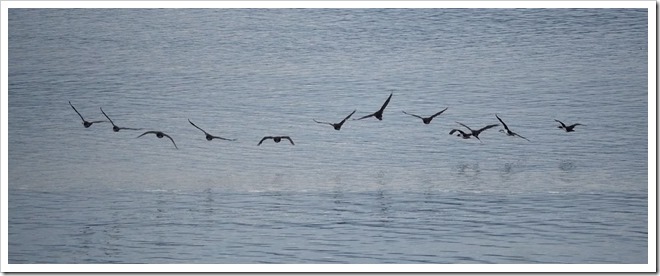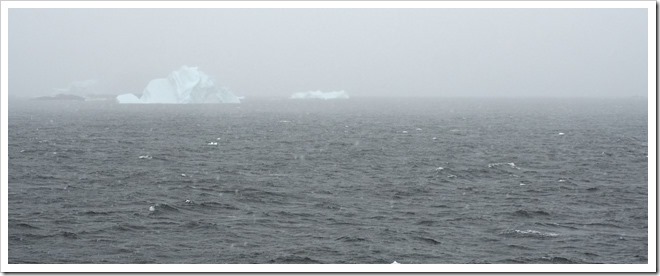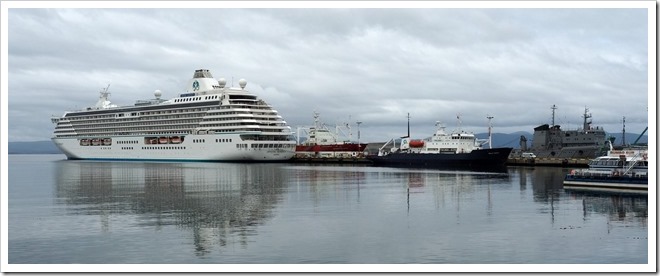Tuesday & Wednesday February 27-28th, 2017
The time had come for us to leave Antarctica, to disembark from the Polar Pioneer on the zodiacs for the last time, land on King George Island, walk a kilometre to the Frei (a Chilean base) airfield and fly to Punta Arenas for the night, and onwards to wherever. There would also be a “Changing of the Guard” at Frei as the plane that takes us homeward brings in another 54 expeditioners who will reverse our trip along the Peninsula and then across the Drake Passage to Ushuai.
|
|
However, the weather changed these plans. Not only where we unable to make any landings on our last day, especially on Deception Island, but the arrival of the plane at Frei station was twice delayed, and the Polar Pioneer cruised in holding patterns off Deception Island and then overnight in Collins Harbour, King George Island. So our mid-day flight became early the following morning, which then became late afternoon!
















